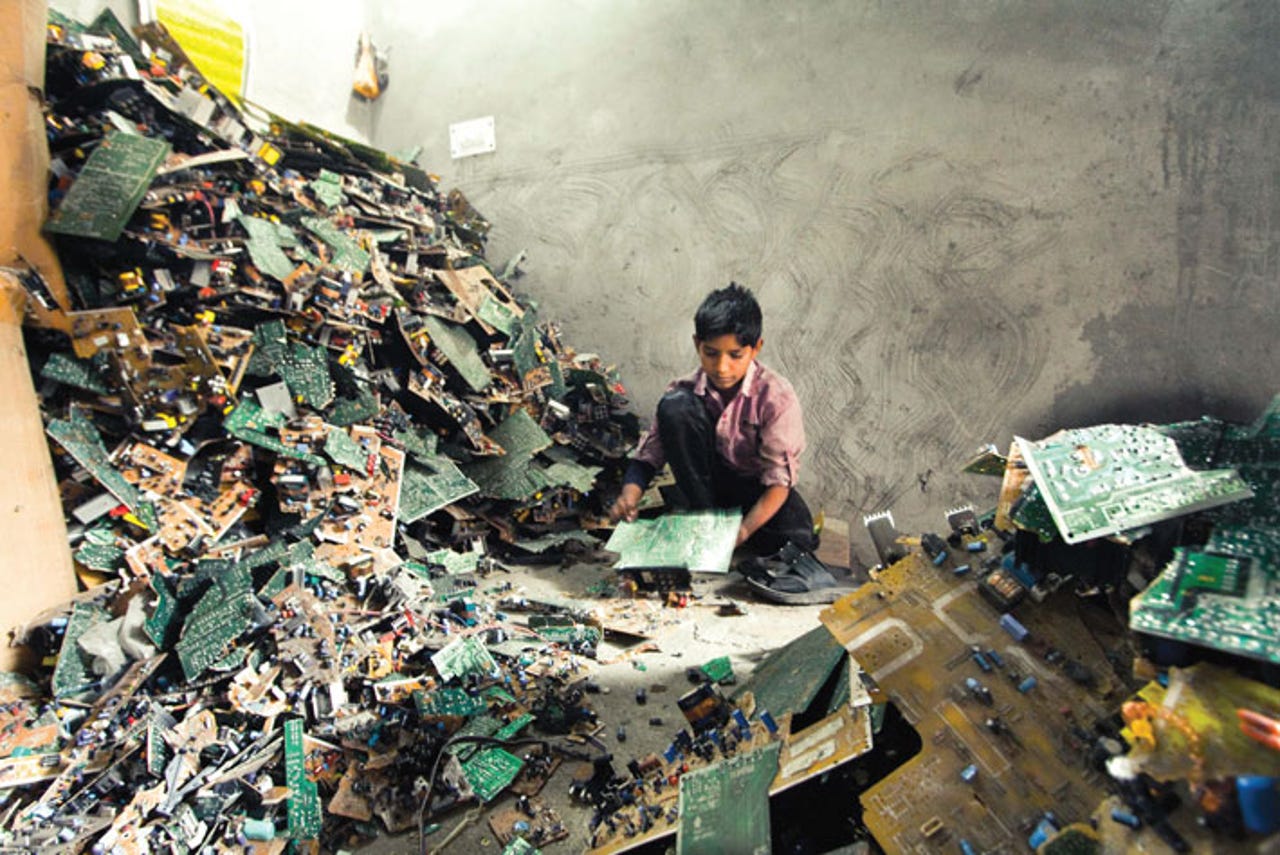India's mounting e-waste woes


In India today, the chief culprits in the e-waste landscape are televisions (68 percent), which are even dearer to many Indians than their smartphones, while 27 percent comprise desktops and servers. So, clearly the worst is yet to come, as Indians in the hinterland start buying smartphones as they did TVs in the last few decades.
What's most worrying is that whatever e-waste is collected is still being done so in an informal and unorganized way, posing a serious health risk to the workers involved in the trade. Here's a great feature and slideshow of how the industry functions where, not more than 15km from central Delhi in a place called Seelampur, children work with their hands, handling acid baths and toxic metals such as cadmium and mercury in order to extract gold and copper from the circuit boards of discarded electronic items. This is the infinitely less-sexy underbelly of India's glittering IT story.
Of course, India tried to remedy the situation by passing a law that required manufacturers to take responsibility for end-of-life recycling of their products through a mechanism that would legitimize the informal sector so that these workers could continue to earn a livelihood but in a safe and organized environment. None of that has transpired in any meaningful way. Manufacturers remain wedded to their ways, and the pernicious effect of the famously debilitating Indian red tape has hurt informal sector workers by making it next to impossible for them to clear their paperwork so they can become legitimate.Still, the irrefutable fact in this industry is that where there's waste, there's wealth, and none more so lucrative than in e-waste, thanks to all those costly metals that are put into electronic machines. The UN report disclosed that every year, around $52 billion value of recyclable e-waste is frittered away. "An astounding 300 tonnes of gold, equal to 11 percent of the aggregate worldwide gold generation in 2013, could have been extricated from the heap of electronic waste in an ecologically amicable way."
Predictably, a few startups are chasing this mother load, and one of the more successful in attracting venture capital and scaling up operations is Attero. The company has built a huge plant in Rourkee, where it deploys its proprietary technology that it is famously secretive about.
Latest news on Asia
According to Quartz, "Attero is now collecting and processing about 1,000 metric tonnes a of e-waste a month from over 500 cities in India, and extracting precious metals like platinum, gold, and selenium from the trash." It has been able to generate $15 million in the last fiscal year, and even managed to turn profitable.
In a novel scheme, Attero has also started paying money to consumers for their phones, and advertises the going rates for various devices on its website. The rates are not bad at all, considering the phone would have been lying around for ages before you sold it to the kabadiwala (the iconic Indian collector of just about anything that can be recycled, who tours neighbourhoods on his bicycle announcing his arrival in a sonorous chant) for a few hundred rupees. For instance, a one-year-old Blackberry Z10 could fetch you Rs. 4,215, while a two-year-old Samsung Galaxy Note will garner Rs. 9,504, which is a lot more than what local shops will be willing to pay for them.
Companies like Attero are key to alleviating the mounting pile of electronic items that India will continue to churn out at alarming rates, since they may also inspire other startups to innovate and jump into the game. However, it will take more than just a few companies, and no less than an earnest governmental policy, if India hopes to wrestle this problem in a safe and economical way to the ground.